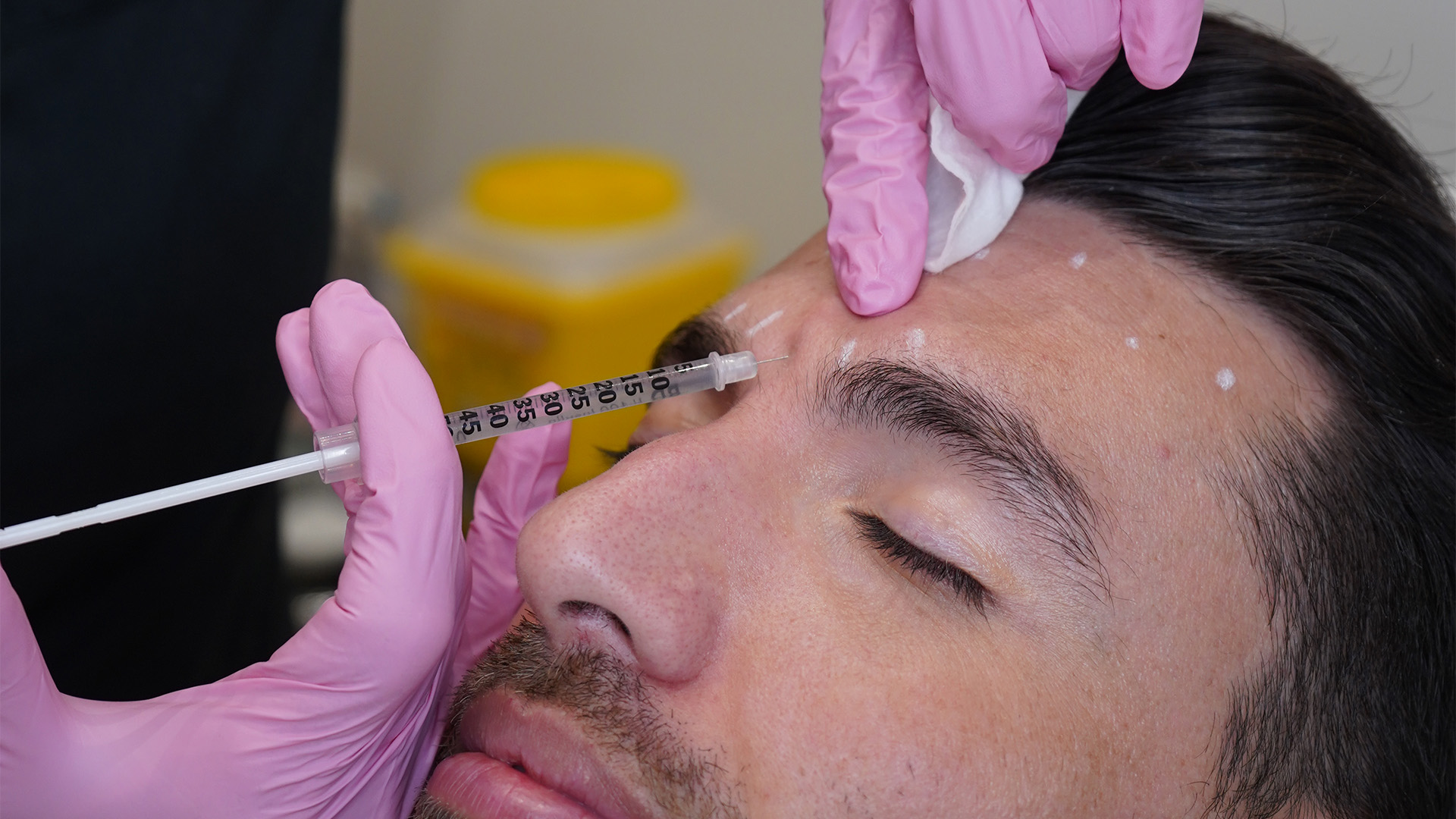For many people, Botox is synonymous with smooth, youthful skin. However, it has far more uses than just wrinkle reduction. Medical Botox was first approved for use back in the 1980’s, and since then it has become a staple in both cosmetic and medical practice. It’s uses range from chronic migraines to muscle disorders, and Botox has helped redefine aesthetic medicine in recent years.
Botox’s Medical Applications
Chances are that you’ve heard of Botox and its association with beauty. You’re however only partially correct, as Botox does have some FDA approved medical applications that truly showcase its therapeutic prowess.
Treatment Frequency: Every 12 weeks
- Effectiveness: Studies show up to a 50% decrease in migraines among people who suffer 15 or more migraines per month.
- Ideal For: People who have at least 15 headache days a month.
Underarm Sweating (Hyperhidrosis)
Botox for hyperhidrosis is a game-changer for those suffering from excessive underarm, hand, or foot sweating. It works by blocking the nerves that stimulate sweat glands.
- FDA Approval: Excess Sweat in 2004
- Duration: Effects last four to six months
,”
Impact: Self-esteem and overall quality of life improve drastically.
Muscle Spasms and Movement Disorders
In the treatment of muscle spasticity and movement disorders, Botox is widely used for:
- Cervical dystonia (neck muscle spasms)
- Blepharospasm (eyelid twitching)
- Spasticity of cerebral palsy and post-stroke patients
- Strabismus (crossed eyes)
Botox reduces pain and improves mobility by temporarily relaxing targeted muscles.
Other Medical Uses
- Overactive bladder: Decreases urgency as well as incontinence.
- Depression: Alleviation of depressive symptoms with Botox is noted in preliminary studies.
- Raynaud’s phenomenon: Under investigation to reduce constriction of blood vessels in the hands and feet.
Dr. Susan H. formerly stated, “Botox has redefined treatment for chronic migraines and muscle disorders. It has been invaluable in areas where medications fail.”
Cosmetic Applications Other Than Wrinkles
The use of Botox in aesthetics is growing rapidly, not just for the reduction of wrinkles, but for overall evaluation of facial balance and proportions.
Facial Slimming
- Masseteric Botox can slim the jaw line by injecting Botox into masseter muscles, thus improving the contouring of the face.
- Popular With: Individuals who have a square jawline or bruxism
- Result Timeline: 4–6 weeks
- Added Benefit: Teasable for many exacerbated jaw tension patients
Lip Flip
A lip flip is a simple but effective procedure where small amounts of Botox is injected into the border of the upper lip to relax its surrounding muscles causing the lip to flip outward somewhat. This accentuates the lip without the use of fillers.
- Ideal For: Lips without the enhancement of volume.
- Duration: 2-3 months.
- Quick Procedure: Requires a few minutes with negligible recovery time.
Gummy Smile Correction
Botox can be utilized to ensure the upper lip does not rise too much to expose extra gum while one is smiling. This helps control how much the lip actually is able to smile.
- Result: More proportional and balanced smile.
- Recovery: Nonexistent; results become visible after 7 days.
“These newer Botox techniques allow for subtle enhancements that look natural and effortless,” says Jamie R., RN, aesthetic nurse injector.
Innovative Uses of Botox
There are still many other advancements with the use of botox to treat cilino-bostedoshiac tremor that are still undergoing R&D. These, and many other innovatively introduced techniques to the botox procedures have been created over time, resulting in countless worldwide.
Bruxism Treatment
One of the most impactful procedures Botox has to offer is the easing of teeth grinding (bruxism) by alleviating the jaw muscles. This decreased the damage presented to the teeth as well as calms the pain, if there is any.
Also Improves: Quality of sleep. Oh, and did we mention the change in the facial shape?
Treatment Area: Masseter muscles.
TMJ Disorder Relief
Jaw locking and pounding headaches while preventing tense jaws and is the more relieving focus of temporomandibular joint (TMJ) dysfunction, Botox permits the use of relieving ache.
Bonus: Some note benefits such as facial slimming, though not officially recognized.
Safety: Needs to be performed by a proficient medical practitioner.
Other Relevant and Emerging Applications
- Facial flushing and undiagnosed facial skin coloring conditions such as rosacea.
- Acne (specifically oil-based)
- Refining neck or Nefertiti lift for jawline enhancing and neck tightening.
- When it comes to medicine and aesthetics, Botox is continuously reshaping traditional boundaries due to broaden studies and off-label uses.
FAQs
Q: What is Botox?
Botox is a clinically use and cosmetically approved substance under the FDA. It is also known as the purified form of botulinum toxin type A, the widely used and recognized muscle relaxer.
Q: How long do Botox effects last?
Cosmetic purposes: 3-6 months.
Medical purposes: 3-4 months, though it is subject to numerous conditions.
Maintenance doses are highly suggested for continuance of desired outcomes.
Q: Is Botox treatment safe?
In the hand of licensed practitioners, Botox is deemed safe due to being tracked clinically with several FDA approvals for numerous purposes.
Q: What are the potential side effects?
In relation, Botox side effects are limited to:
- Injuries: Minor bruise or swelling over the area of injected.
- Physique: Headache and flu symptoms
- Eyelid droop (rare but short lived)
- Weakness in muscle (Identifiers of the area treated)
- Ensuring medicines are certified helps in avoiding the unwanted risk elements.
Conclusion
Botox goes beyond wrinkle treatments; it is a complex beauty and medical procedure. Its innovative uses are constantly changing lives, from chronic migraine treatment to jawline sculpting and muscle disorder management. Botox offers safe and effective remedies for both cosmetic adjustments and medical concerns, making it much more than a surface-level fix.
Want to see the benefits Botox can offer you? No need to struggle alone; visit a licensed medical or cosmetic doctor to receive tailored care and take the first step towards looking and feeling your best.

